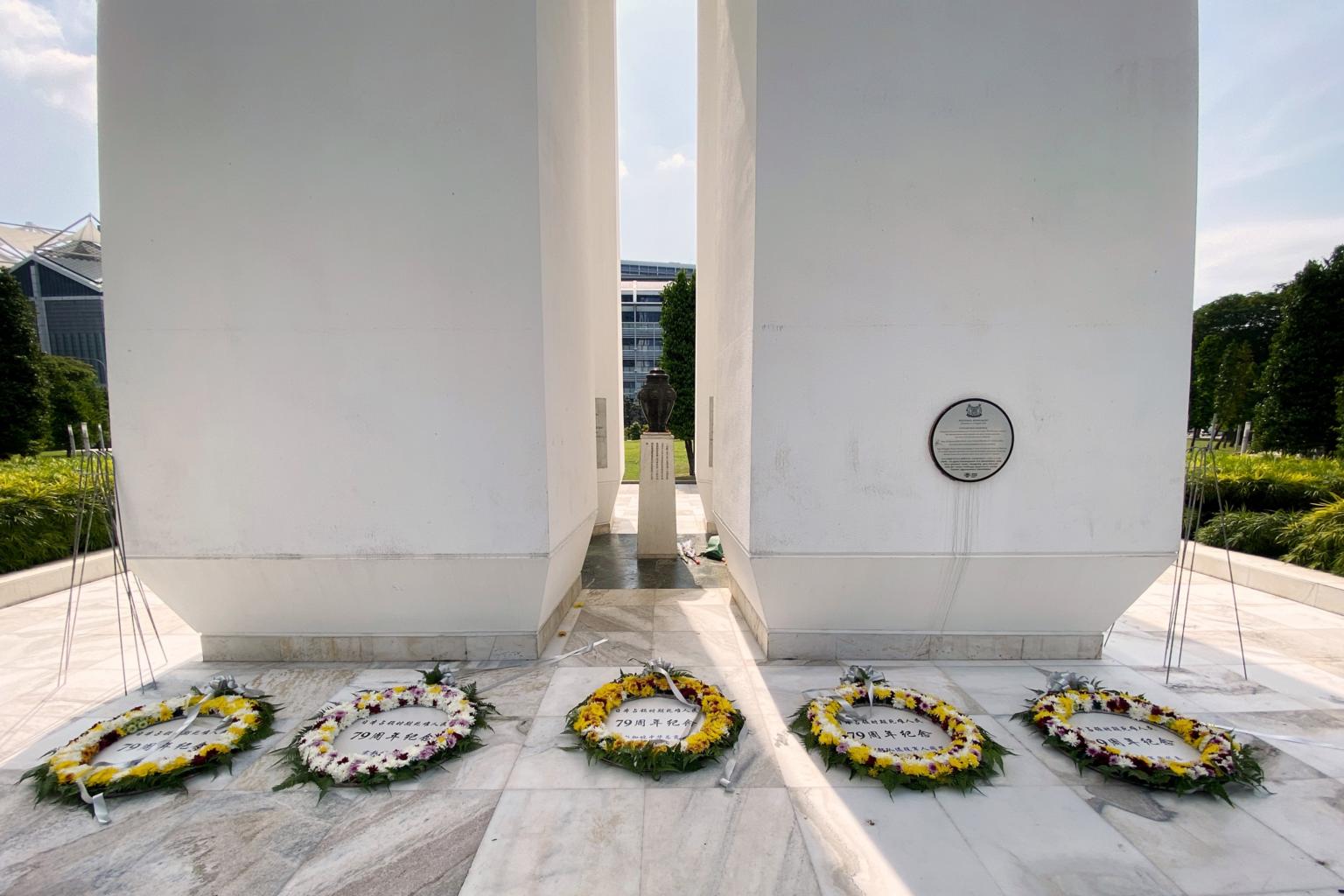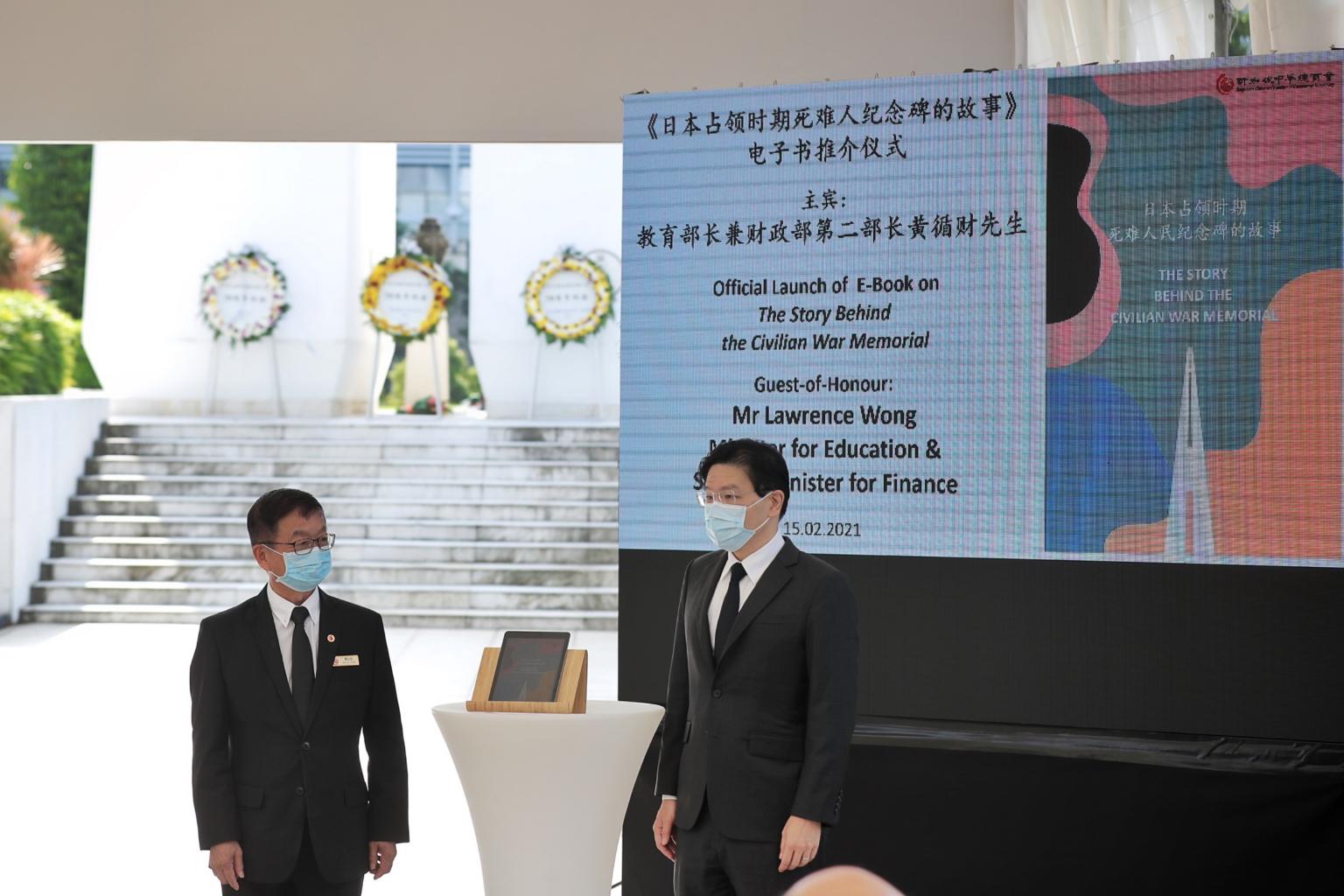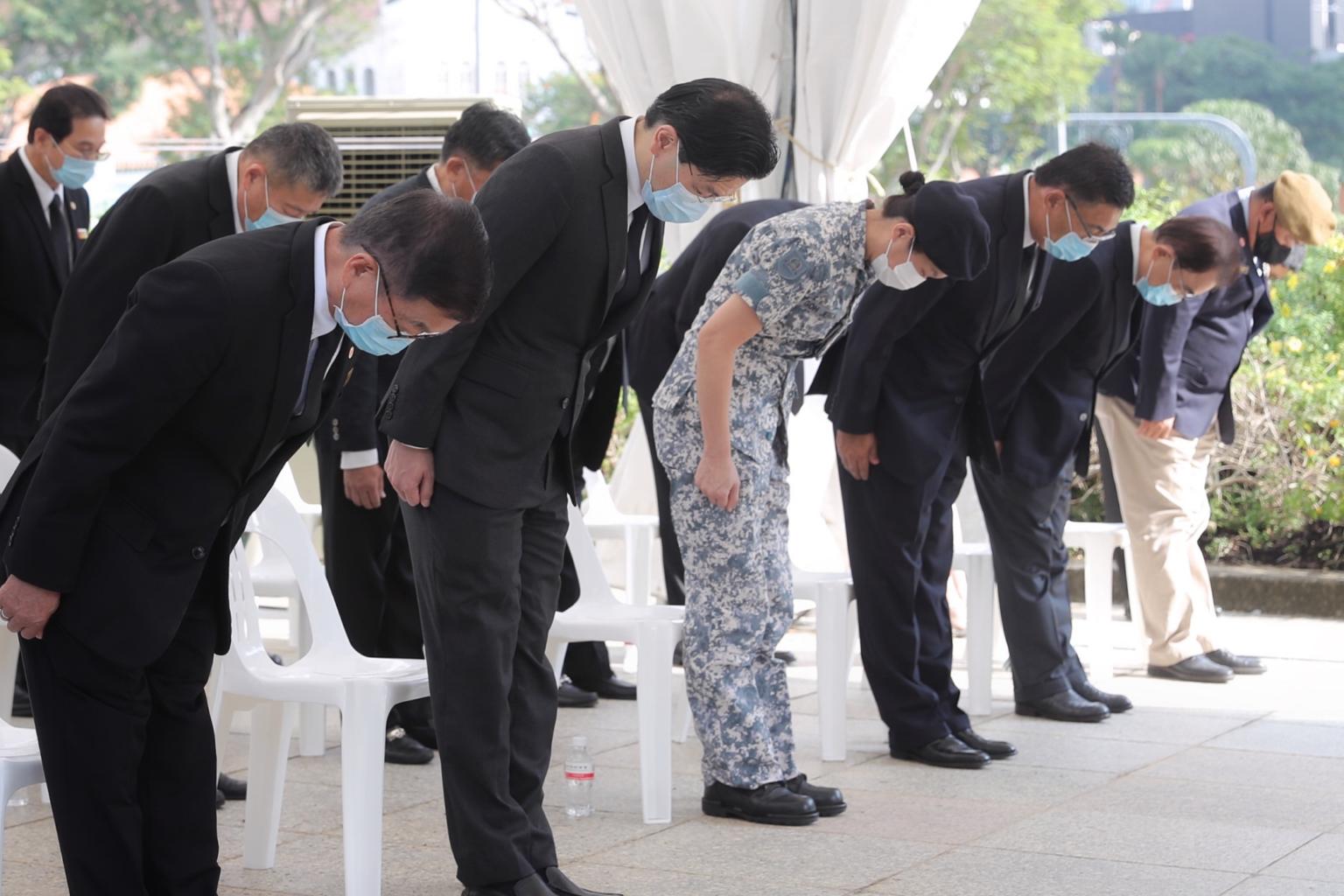50 gather at war memorial to remember victims of Japanese occupation, launch e-book
Sign up now: Get ST's newsletters delivered to your inbox

It was the 54th memorial service and also fell on Total Defence Day.
ST PHOTO: GAVIN FOO
Follow topic:
SINGAPORE - World War II veterans, families of those who died during the Japanese occupation of Singapore and religious leaders on Monday (Feb 15) attended a scaled-down memorial ceremony, as a free electronic book was launched to detail the sacrifices of those during the tumultuous years.
At the War Memorial Park in Beach Road, about 50 attendees split into two zones observed a minute of silence and laid wreaths in a small ceremony that in previous years saw up to 1,000 participants.
Monday marked the 79th anniversary of the British surrender to the Japanese in 1942 and was also Total Defence Day.
The event was the 54th commemoration service since 1967, when the memorial was unveiled by founding Prime Minister Lee Kuan Yew.
The hour-long ceremony, co-organised by the Singapore Chinese Chamber of Commerce and Industry (SCCCI) and Nexus, the department responsible for total defence and national education in the Ministry of Defence, had a strong focus on making sure that memories of the war essential to Singapore's national narrative are not forgotten.
The hour-long ceremony, co-organised by the Singapore Chinese Chamber of Commerce and Industry (SCCCI) and Nexus, the department responsible for total defence and national education in the Ministry of Defence, had a strong focus on making sure that memories of the war essential to Singapore's national narrative are not forgotten.
SCCCI president Roland Ng said at the ceremony: "We hope our future generations can fully understand the importance of freedom and peace because of the lessons learnt from the Japanese Occupation, reiterating the importance of staying united, defending our country and being prepared for danger in times of peace.
"Although the circuit breaker measures had been gradually eased and there have been slight changes to how the war memorial service is held this year, what remains unchanged are the lessons we learn from history and the importance of strengthening Singapore's national defence framework."
The SCCCI's 36-page e-book, The Story Of The Civilian War Memorial, contains brief information about how the memorial in Beach Road was erected and some stories of the war that flesh out the best of those who were in Singapore then.
It is written in English and Chinese and is aimed particularly at the younger generation, who are today more distant from a war the pioneer generation lived through and to this day are unable to forget.

One of the key events listed was Sook Ching, the anti-Chinese operation by the Japanese military police to break the spirit of an ethnic community it saw as particularly resistant to its colonial enterprise, and which killed 50,000 people.
Education Minister Lawrence Wong, who was guest of honour at the ceremony, said: "As time passes, the generation that endured the Occupation... will gradually fade away. It is important that we keep these memories alive.
"(The e-book) will help new generation growing up to understand how we got here, why it could have easily turned out very differently, and why Singapore is worth defending."
Among the attendees was Madam Shen Pin Pin, 82, whose father and uncle - both journalists - were taken away by the Japanese in the middle of the night during Chinese New Year in 1942.
She was glad the event was not cancelled this year because of the pandemic, unlike many other events.
"I make it a point to come every year. We waited till the end of the war but he (my father) never returned... we also had no more information about him. We heard that like other men arrested, he was shot in the public courtyard," she said.

Her husband Ang Eng Chong, 88, said: "What we thought were firecrackers at the time were actually gunshots. I remember the bursts of sound to this day."
The memorial was dedicated to the civilian victims of the Japanese occupation on Feb 15, 1967 by then Prime Minister Lee Kuan Yew, who said the aim was "not to rekindle old fires of hatred, nor to seek settlements for blood debts".
Instead, he said the monument served as a reminder to those who lived through the Japanese Occupation of "what can happen to people caught completely unaware and unprepared for what was in store for them".
"It will help our children understand and remember what we have to tell them of this lesson we paid so bitterly to learn. It should spur us on to pursue policies which will cultivate for us the largest number of reliable and strong friends."

